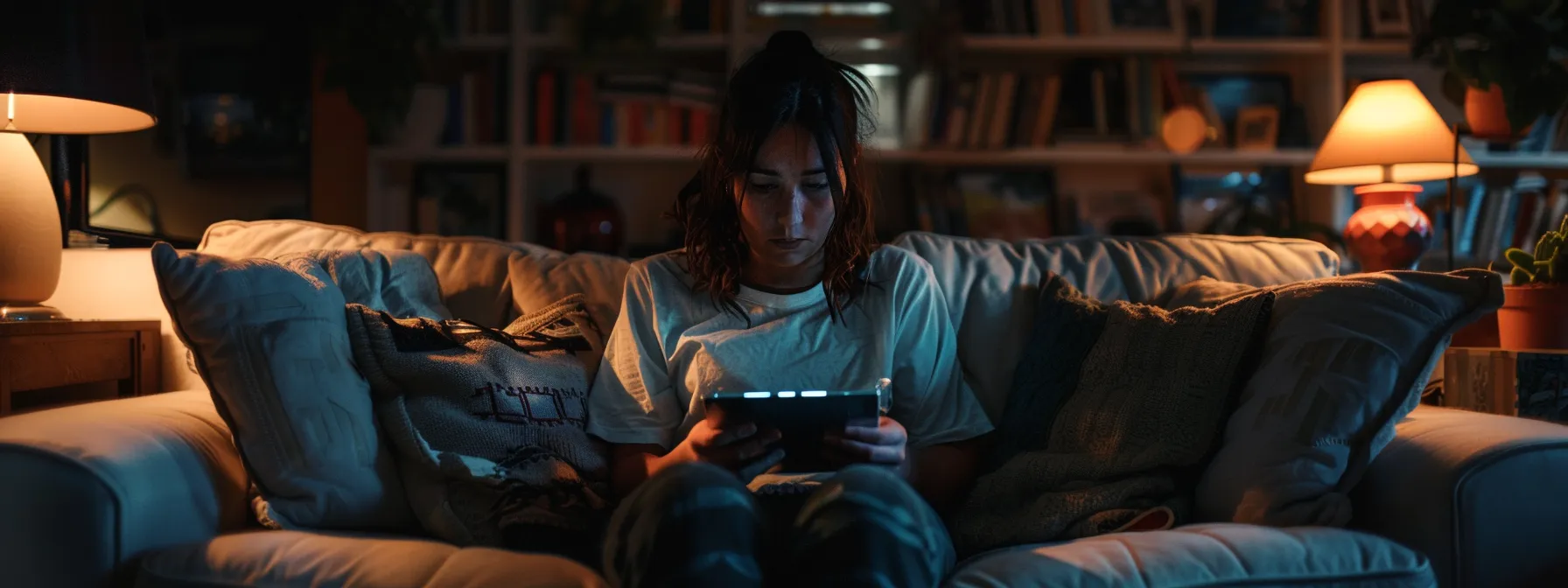Table Of Contents:
- Enhancing Your Digital Wellbeing: Practical Tips and Strategies
- Understanding the Impact of Digital Technology on Wellbeing
- Identifying Sources of Digital Stress
- Recognizing the Signs of Digital Overload
- The Role of Digital Content in Emotional Wellbeing
- Implementing Screen Time Limits for Improved Wellbeing
- Strategies for Setting Realistic Screen Time Boundaries
- Tools and Apps to Monitor and Control Usage
- Balancing Online and Offline Activities in Daily Routines
- Cultivating a Positive Digital Environment
- Choosing Uplifting and Positive Digital Content
- Managing Notifications to Minimize Distractions
- Enhancing Privacy Settings for a Safer Online Experience
- Establishing Healthy Digital Habits
- Creating a Digital Detox Routine for Regular Breaks
- The Importance of Mindful Scrolling
- Encouraging Physical Activities and Hobbies Outside of the Digital Realm
- Nurturing Social Connections in the Digital Age
- Using Technology to Enhance Rather Than Replace Real-Life Interactions
- Setting Boundaries for Healthy Digital Communication
- Tips for Maintaining Meaningful Digital Relationships
- Accessing Resources for Digital Wellbeing Support
- Utilizing Built-in Digital Wellbeing Features on Devices
- Exploring Apps Dedicated to Mindfulness and Relaxation
- Seeking Professional Advice for Digital Wellbeing Concerns
- Conclusion
Enhancing Your Digital Wellbeing: Practical Tips and Strategies
In the digital era, our online activities can often lead to worry, whether it’s stress from an inbox that never seems to sleep or the strain of cyberbullying encroaching on our mental space. Just like we have emergency procedures and first aid kits for physical health, it’s critical to develop safeguards for our digital wellbeing. The right strategies can serve as the citizens advice bureau for navigating the complex web of online interactions. Keep reading to uncover the insights and strategies that will fortify your digital wellbeing, ensuring your online life supports, rather than undermines, your overall happiness and health. Join me in transforming your digital landscape into a space of tranquility and empowerment.
Understanding the Impact of Digital Technology on Wellbeing

The digital world offers an array of tools that can be both a gift and a source of distraction, affecting our emotional and mental wellbeing. It’s crucial for me to help you pinpoint what aspects of technology could be contributing to a sense of stress or loneliness. Whether it’s the relentless notifications that interrupt dinner with family, the hours lost in a fundraising campaign that you’re passionate about, or the overwhelming flood of information when researching something as significant as pregnancy, being aware of these potential stressors is step one. It’s equally vital to recognize the warning signs of digital overload, which can be subtle and insidious. And let’s not overlook the content we consume daily; it has a profound influence on how we feel. Addressing these points is a proactive way to safeguard our emotional wellbeing in a world where screens are ubiquitous.
Identifying Sources of Digital Stress
Uncovering the sources of digital stress involves a close look at our daily routines and the ways technology can hamper our health. The endless stream of images and content can influence our perceptions of body image and self-worth, contributing to a strain on mental health. Meanwhile, the compulsive reach for our devices interrupts not only exercise routines but also critical moments dedicated to nutrition and rest, potentially leading to addiction-like behaviors. Aches and pains often follow extended periods of poor posture during screen time, underscoring the need for a balanced approach to our digital lives.
Recognizing the Signs of Digital Overload
It wasn’t long ago that we might have compared the incessant pinging of our phones to an addiction, with digital overload mimicking symptoms of more traditional afflictions like disease or alcohol dependence. It’s clear now that constant connectivity can leave us feeling drained, similar to the fatigue after a long battle with illness. Recognizing this parallel helps guide policy making in my own life, as I establish boundaries akin to a social vaccine against the intrusion of work emails or late-night scrolling. Stepping in too as my own form of peer support, I advise friends and network contacts to heed the warning signs of digital overload; acknowledging the problem is the first step to a healthier, more balanced interaction with our devices.
The Role of Digital Content in Emotional Wellbeing
The content we immerse ourselves in profoundly shapes our emotional state. Take, for instance, the late-night scrolling that often leads to insomnia—a habit that not only disrupts sleep but can also feed into a cycle of stress and cognitive fatigue. Recognizing the influence of certain types of digital media, I reach out to sources like the campaign against living miserably or Childline, which underscore healthy information consumption. They advocate for an awareness of how digital content affects our emotions, guiding us towards cognitive behaviour therapy techniques to moderate our interaction with technology for better mental health outcomes.
Recognizing the profound influence digital technology has on our lives leads us to a vital tool for managing its effects: setting limits on screen time. By consciously regulating our digital engagement, we pave the way for enhanced wellbeing.
Implementing Screen Time Limits for Improved Wellbeing

As we navigate the onslaught of digital advances, setting realistic boundaries around screen usage has never been more critical. My experiences working in marketing have honed my understanding of just how pervasive the internet can be. With every new campaign—whether aimed at raising awareness about sexual violence or creating a buzz around a new London-based startup—comes the heightened potential for digital burnout. Acknowledging the upcoming holiday season reminds me of the importance of unplugging from the digital nexus and truly engaging with family, free from the constant beck and call of our devices. As Christmas approaches, I look forward not only to festive celebrations but also to imparting strategies that empower you to monitor and temper your screen time, ensuring that your online ventures remain both productive and enriching. Effective tools and apps play a central role in managing our digital diets, and finding harmony between our online commitments and invaluable offline interactions is essential for fostering our holistic wellbeing.
Strategies for Setting Realistic Screen Time Boundaries
In establishing screen time boundaries, I often educate readers about the discernment needed amidst browsing. When individuals engage with content related to sensitive issues like cancer or grief, the time spent seeking information or support may vary greatly compared to leisure activities, where limitations might be more stringent. Resources like Childnet offer guidance in navigating online spaces safely, which is incredibly beneficial in protecting against harassment and problem gambling, promoting a balanced digital experience that honors our need for both connection and personal wellbeing.
Tools and Apps to Monitor and Control Usage
In the quest to balance pleasure and responsibility in the digital realm, tools and apps dedicated to monitoring and controlling screen usage have become indispensable allies. They offer us the power to actively mitigate stress and the potential for debt from wasted time, while fostering an environment where we can rethink mental illness by promoting healthier online habits. The fear of losing control over our digital consumption is assuaged as these resources empower us to take charge of our screen time and wellbeing:
- Initiating technology-free hours before sleep to encourage restorative rest and reduce stress.
- Setting up app-specific limits to decrease the likelihood of falling into habitual overuse, potentially avoiding the seduction of pleasure that exacerbates mental health struggles like anxiety.
- Utilizing built-in smartphone features or third-party applications that track and report our digital activity, offering insights and reminders to help us stay aligned with our wellbeing goals.
Balancing Online and Offline Activities in Daily Routines
Incorporating equilibrium between the digital and the tangible aspects of our lives demands intentionality. In Wales, I’ve held workshops focused on enhancing workplace wellbeing, underscoring the importance of detaching from screens to enjoy a meal or a simple drink with colleagues; it’s about cultivating a lifestyle that values personal connections as highly as online engagement. Creating and adhering to designated tech-free times during my routine has been fundamental for fostering this balance, turning frequently asked questions (FAQs) about managing screen time into lived-out answers.
Managing our engagement with screens touches just the surface; what also matters is the atmosphere we create within our digital spaces. Let’s shift our focus to shaping a positive digital environment, enhancing not just our time online but also our overall quality of life.
Cultivating a Positive Digital Environment

In the midst of our increasingly connected lives, where the distinction between online and offline blurs, fostering a positive digital environment becomes central to our wellbeing. As an expert who has navigated the complexities of content’s impact on issues from pain management to bipolar disorder, I recognize the profound effect the digital landscape can have on sleep and overall health. Choosing content that uplifts and inspires rather than drains and demoralizes is just as important as mastering how to manage the barrage of notifications that can fracture our attention. Moreover, fine-tuning our privacy settings secures not just our online data but also our peace of mind, creating a haven where we can engage securely and serenely with the digital world. Crafting this balance is not just a recommendation—it’s a keystroke towards sustaining our well-being in the digital age.
Choosing Uplifting and Positive Digital Content
In the pursuit of a healthier online existence, I proactively select digital content that alleviates the heavy weight of daily pressures, rather than compounding them. I steer clear of sites that may promote gambling, acknowledging the havoc such pursuits can wreak on emotional stability and financial management. Instead, I seek resources that boost knowledge, from enhancing employment opportunities to improving overall wellbeing.
Managing Notifications to Minimize Distractions
Mastering the array of notifications pinging from every postcode, I focus on creating a digital environment that’s conducive to health. As a parent, knowing which alerts merit immediate attention and which can wait reduces undue panic, allowing my phone to serve as a safe space, not a source of constant interruption.
Enhancing Privacy Settings for a Safer Online Experience
Adjusting privacy settings goes beyond safeguarding our data; it touches on the broader canvas of our wellbeing, intertwining with diverse areas from economics to healthcare. Take note: implementing stringent privacy controls can reduce unwanted marketing, protecting our brain from decision fatigue induced by excessive options, and aid in managing conditions like diabetes, where targeted advertisements might impact dietary choices. It also ensures individuals with disabilities who may be more vulnerable online can browse without the added stress of unsolicited contact, which could exacerbate signs and symptoms of anxiety.
- Audit privacy settings regularly to stay ahead of changes in platform policies and safeguard personal information.
- Customize social media profiles to control who sees your data, reducing the risk of your information being used irresponsibly.
- Stay informed about privacy tools that can help diminish digital footprints and empower more secure online activities.
Now that we’ve laid the groundwork for a brighter digital space, let’s shift our focus to personal practice. It’s time to delve into establishing habits that support our digital well-being and productivity.
Establishing Healthy Digital Habits

In cultivating a landscape that fosters digital wellbeing, it’s become increasingly clear that integrating a routine for regular digital detoxes, practicing mindful scrolling, and pursuing physical pastimes outside the digital domain are central pillars. As a long-standing advocate for self-care, I appreciate the profound impact that thoughtful management of digital engagement can have on nursing our mental health back to vibrancy. Engaging within our community in a way that enriches rather than depletes our mood requires deliberate maneuvers. Concentrating on the quality of the digital content with which we fill our minds ensures that what we absorb contributes positively to our overall feeling of wellness. Let’s acknowledge that our devices are tools to be used wisely, not masters to be obeyed blindly.
Creating a Digital Detox Routine for Regular Breaks
In crafting a digital detox routine, it’s insightful to view screen time as we do smoking – something to minimize for our health. As a mother would limit advertising‘s influence on her children, we can restrict access that apps and websites have to our lives, making room for a rejuvenating break. Balancing periods of low or no screen usage with involvement in sport or other hobbies can reinvigorate both mind and body.
- Analyze your current screen time and identify periods where you can replace digital activities with physical exercise or hobbies.
- Establish clear rules for yourself, akin to a mother setting guidelines for her children, to avoid inadvertent overexposure to digital advertising.
- Commit to regular intervals where you disconnect completely—consider these detox periods as essential to your well-being as a healthy diet or regular sporting activities.
The Importance of Mindful Scrolling
Embracing mindful scrolling is a powerful strategy in coping with the deluge of content that technology serves up daily. As I sift through an assortment of information, my focus is on selecting material that’s helpful and uplifting, sidestepping the pitfalls of discrimination and avoiding content that may trigger negative emotions associated with issues like domestic violence. This selective engagement ensures that my interactions with digital content are meaningful and beneficial to my mental wellbeing.
- Adopt a judicious approach to content, especially when it pertains to sensitive topics.
- Recognize and sidestep material that could contribute to stress or reinforce negative biases.
- Allocate time to ponder and process information to maintain a healthy digital diet.
Encouraging Physical Activities and Hobbies Outside of the Digital Realm
Amidst the digital noise, I consciously carve out time to immerse myself in activities that don’t demand screen engagement. Research consistently points to the therapeutic benefits of engaging in physical hobbies which not only combat the fatigue associated with prolonged screen use but can also alleviate the symptoms of anxiety. It’s a reminder that sometimes, stepping away from the keypad is the best medication for a cluttered mind.
| Activity | Benefits | Frequency |
|---|---|---|
| Gardening | Stress reduction, improved mood | Weekly |
| Cycling | Increased cardiovascular health, reduced anxiety | Bi-weekly |
| Painting | Enhanced creativity, mindfulness | Monthly |
As we anchor ourselves in healthy digital routines, it’s time to cultivate our interactions within the vast networks online. Let’s turn our attention to the art of building and nurturing meaningful connections in the bustling digital age.
Nurturing Social Connections in the Digital Age

As I reflect on the diverse facets that shape our digital health, I recognize the pivotal role that social connections play in sustaining our emotional wellbeing. The varied spectrum of online platforms can either enrich our bonds or act as an addictive drug, dulling our sense of real-world connectivity. We must employ technology in ways that amplify our experiences rather than serving as a mere placeholder for physical activity and face-to-face exchanges. In my journey, I have found that incorporating Analytics can guide us in mastering the digital diet of our interactions, enabling us to foster genuine relationships through screens. My intention moving forward is to converge the convenience of modern communication with the invaluable satisfaction derived from authentic interpersonal experiences, ensuring that each digital interaction is conducted with the same intentionality I would apply in person.
Using Technology to Enhance Rather Than Replace Real-Life Interactions
In an era where our image is often curated through the lens of social media, it’s easy to forget the warmth of a human voice or the comfort derived from a face-to-face conversation. I regularly utilize technology to stay in touch with friends and colleagues, but I always try to remember that behind every computer is a person, not just an avatar. And when the need arises for deeper support, I don’t just send a text; I encourage reaching out to helplines like the Samaritans or seeking advice from the National Health Service. These actions help ensure technology serves as a bridge rather than a barrier to genuine human connection.
- Remember that behind every screen is a living, breathing individual with emotions and experiences.
- Employ technology as a means to remain connected, while still nurturing personal interactions that require our physical presence.
- Direct those in need towards professional support services, utilizing technology to provide them with resources such as helplines or national health organizations.
Setting Boundaries for Healthy Digital Communication
In my journey of learning about digital wellbeing, I’ve become acutely aware of the necessity to establish firm boundaries to safeguard against detrimental aspects such as cyberbullying and invasions of privacy. By setting clear limits on the types and volume of communications I engage in, my welfare—and that of my contacts—is preserved, echoing the care and safeguarding principles I admire in organizations like the NHS Foundation Trust. It’s akin to reminding myself to take a deep, cleansing breath before entering conversations or exchanges online, ensuring that I approach digital communications with the same conscientiousness as I would any other meaningful aspect of my life.
Tips for Maintaining Meaningful Digital Relationships
In a landscape where violence and depression rear their heads all too often, sustaining real connections through digital means is more than just sharing knowledge—it’s about holding space for meaningful exchange and support. Initiating conversations that might evolve into a form of psychotherapy, I’ve found, strengthens bonds and combats the isolation that technology can sometimes create. For instance, a simple, intentional telephone call can bridge the gap that text messages can’t cross, embracing the full spectrum of human connection and empathy.
As we consider the vitality of social ties online, let’s shift our focus toward securing support for our digital wellbeing. Ensuring a healthy digital life requires knowing where to find the necessary resources.
Accessing Resources for Digital Wellbeing Support

The journey toward a balanced digital life is ongoing, and I’ve learned that accessing the right resources can empower us to navigate this space with confidence and ease. At times, guilt may seep in when we find ourselves scrolling mindlessly, or we might notice patterns resembling an eating disorder in our digital consumption. To address these concerns and gain better control over our screen time and data usage, we can turn to the built-in digital wellbeing features on our devices that help us track and manage our online habits. Additionally, the exploration of apps dedicated to mindfulness and relaxation can provide a much-needed respite from the digital buzz. Finally, for those times when we’re grappling with more serious digital wellbeing issues, seeking professional advice is a step forward in the right direction. As an advocate for responsible digital engagement, I’m always mindful of complying with standards like the General Data Protection Regulation, ensuring my recommendations respect your privacy just as I advocate for the responsible handling of volunteering databases and sensitive personal information.
Utilizing Built-in Digital Wellbeing Features on Devices
My confidence in navigating the digital space has been significantly bolstered by using the built-in wellbeing features on my devices. These tools equip me with the skill to mitigate risk by allowing me to monitor my app usage, set reminders to take breaks, and schedule downtime, which collectively contribute to better mental health and a more controlled digital life.
Exploring Apps Dedicated to Mindfulness and Relaxation
My journey has led me to embrace mindfulness and relaxation apps, which I find invaluable for grounding oneself amid the digital storm. They subtly integrate into my daily life, offering a palette of calming sounds and guided meditations that help anchor my thoughts and alleviate the buzz of constant connectivity.
Seeking Professional Advice for Digital Wellbeing Concerns
When personal efforts to manage digital habits fall short, I seek the guidance of mental health professionals whose expertise lies specifically in digital wellbeing. These specialists not only provide personalized strategies for healthier online behavior but also offer support for emotional challenges that may arise from digital dependency.
Conclusion
As we increasingly intertwine our lives with digital technology, prioritizing our digital wellbeing is crucial to maintain a balanced lifestyle. Implementing pragmatic strategies such as setting screen time limits, cultivating positive content, and using technology meaningfully can significantly improve our emotional and mental health. Regular digital detoxes and fostering real-world connections enhance our resilience against the potential downsides of a connected life. Ultimately, embracing tools and professional resources provides the support needed to navigate and thrive in our digital experiences.





